Certified DOT Drug Testing Services for Employees
DOT drug testing is a staple of the U.S. transportation industry to ensure that crew members refrain from alcohol and drug use that could cause serious accidents. CCM Drug Testing offers the services you need, when and where you need them, to ensure that your employees are following all federal guidelines and regulations to keep our roads safe.
About DOT Drug and Alcohol Testing with CCM
The U.S. Department of Transportation (DOT) has several agencies that require drug and alcohol testing of safety-sensitive employees, or employees who are in positions that require extreme care to ensure their safety and the safety of the people around them. Part of ensuring that safety is checking that these employees are not abusing certain substances.
DOT agencies with safety-sensitive positions include:
- Federal Motor Carrier Safety Administration (FMCSA)
- Pipeline and Hazardous Materials Safety Administration (PHMSA)
- Federal Railroad Administration (FRA)
- Federal Aviation Administration (FAA)
- U.S. Coast Guard
At CCM, we offer mobile and clinic testing services—including DOT 5-panel testing—to individuals, businesses, schools, and more in select areas of Missouri and Alabama.
What are the DOT Required Tests?
Commercial driver’s license (CDL) employees to take the following tests to begin and/or continue all commercial motor vehicle (CMV) operations:
- Pre-Employment Drug Testing
- Post-Accident Testing
- Random Drug Testing
- Reasonable Suspicion Testing
- Return-to-Duty Testing
- Follow-Up Testing
LEARN MORE ABOUT THE DOT AND NON-DOT TESTING SERVICES WE OFFER
What Does a DOT Urine Test Check For?
U.S. DOT drug testing programs use 5-panel urine testing for the following substances/metabolites*:
- Marijuana (THC)
- Cocaine
- Opiates/opioids, including opium and codeine derivatives
- Amphetamines and methamphetamines, including ecstasy (MDMA)
- Phencyclidine (PCP)
Urine tests are also used for DOT alcohol testing programs.
*According to DOT Rule 49 CFR Part 40 Section 40.85.
How are DOT Drug Test Samples Collected?
Urinalysis, or a urine test, is currently the only valid means of DOT drug testing. However, DOT is looking to change its testing protocols so that oral fluid samples may be collected in place of urine specimens in certain circumstances.
CCM Drug Testing will stay on top of federal testing requirements and DOT regulations. At least 2 labs will require certification from the U.S. Department of Health and Human Services before these new drug testing procedures go live.
What Happens if an Employee Fails a DOT Drug Test?
If a test comes back with non-negative results, we will send the results to a medical review officer (MRO). The MRO will then confirm the results and follow up with both the employee and their doctor to determine if there is a valid medical reason for the failed test (having a medical marijuana card is not a valid reason for failing a DOT test).
CCM will contact you, the employer, regarding drug test results within 5-7 business days after the lab/MRO has received the specimen for review.
Can Employees Refuse a DOT Drug Test?
Refusal to take a test means automatic removal from CMV operations. Leaving a collection site before the sample-collection process is complete can count as a refusal to test.
When an employee fails a test or refuses to take one, you, the employer, must provide the employee with a list of DOT-approved substance abuse professionals (SAPs). SAPs will help the employee begin the return-to-duty process, if applicable. The employee must complete this process in full before resuming CMV operations.
You can learn more about the return-to-duty process—including how to find DOT-approved SAPs—here: https://www.transportation.gov/odapc/sap.


